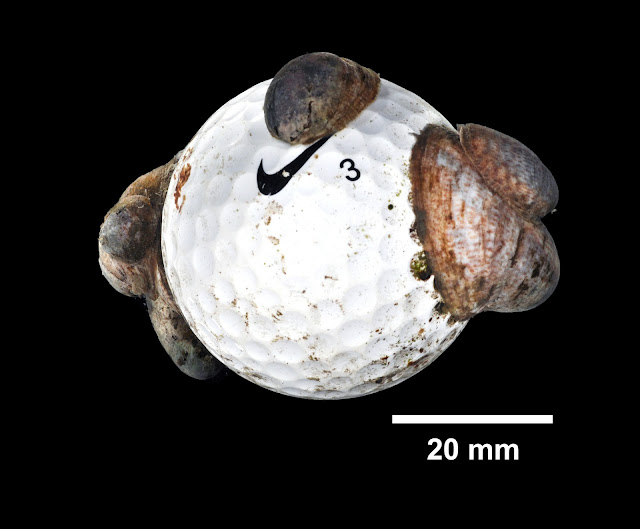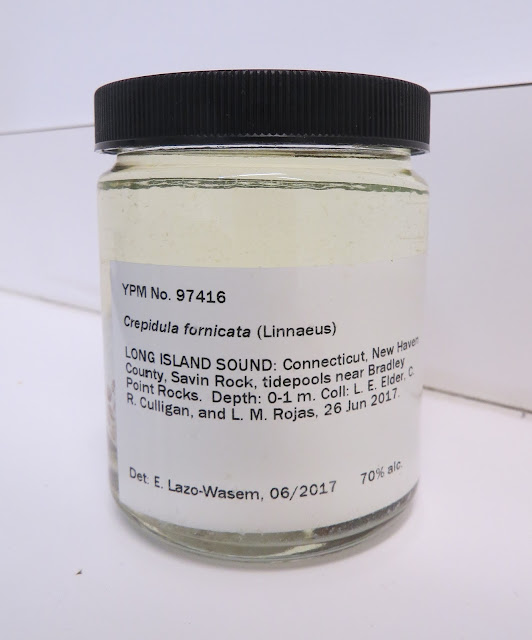Once upon a time, Cinderella played golf. When the clock struck midnight, she rushed back home and left behind her glass slippers. The spell wore off and they turned into Crepidula fornicata, the common slipper shell.
 |
| YPM 97416: Crepidula fornicata (Image by Eric Lazo-Wasem) |
I was browsing through the IZ wet collections when the round white shape caught my eye. Soft, squishy, phallic, prickly, hundreds of baby shrimp eyes staring—bizarre is the norm on the shelves. Nonetheless, seeing a golf ball in a jar of alcohol gave me a jolt of surprise.
C. fornicata typically live in intertidal habitats, stacked on top of one another on rocks, horseshoe crabs, shells, and other objects. In the stack, females reside at the base. They're larger and older than the younger, smaller male C. fornicata on top of the stack. When the females die, the largest of the males becomes a female. The spell is called sequential hermaphroditism: occurring when an individual organism changes sex in their reproductive cycle, usually cued by a change in social structure, size, or age.
This particular specimen, YPM 97416, was collected by members including Lourdes and Eric. I asked Lourdes what was behind the decision to collect the entire golf ball. She said they found it amusing. Eric cataloged the entire piece and photographed it while the slipper shells were still attached to the golf ball. It could easily be a sculpture from an art exhibit on the Anthropocene.
Going to 'collect' specimens can give the impression of an excursion into an environment removed from human contact. More often than not though, we inhabit the same places. Golf courses and intertidal areas, alternating lamp posts and trees lining streets, mansions along the ocean, roundworms vomited up in Union Station—man and nature is a false dichotomy.
Lourdes showed me another shelf containing specimens attached to man-made objects, this time featuring Crassostrea virginica, or the eastern oyster. One can wonder about all the stories behind the objects that the oysters are attached to: a man's shoe, a tobacco pipe, and a doll's leg are among the pieces that were collected from the late 1800s.
 |
| Man's shoe |
 |
| Hair comb |
 |
| Instrument mouthpiece (?) |
 |
| Tobacco pipe |
 |
| Pocket knife |
 |
| Glass bottle neck |
 |
| Threaded bolt |
 |
| Wooden doll's leg |
 |
| Wooden plate cover |
 |
| Wooden plate cover |
 |
| 'Off Woodmont'— near Milford, CT |
 |
| Twisted railing (could be railroad tie, or from a stairwell) |
 |
| Lady's flat |
Families of people, of oysters, and other life live in and by the sea. Though the relationships are constantly shifting, there is always some dependence rooted in co-existence. What remains may be the fragments of shells in the soles of our shoes, eventually crumbling into the ocean and washed up onto another beach with its own footprints and shells in the sand.




















Comments
Post a Comment